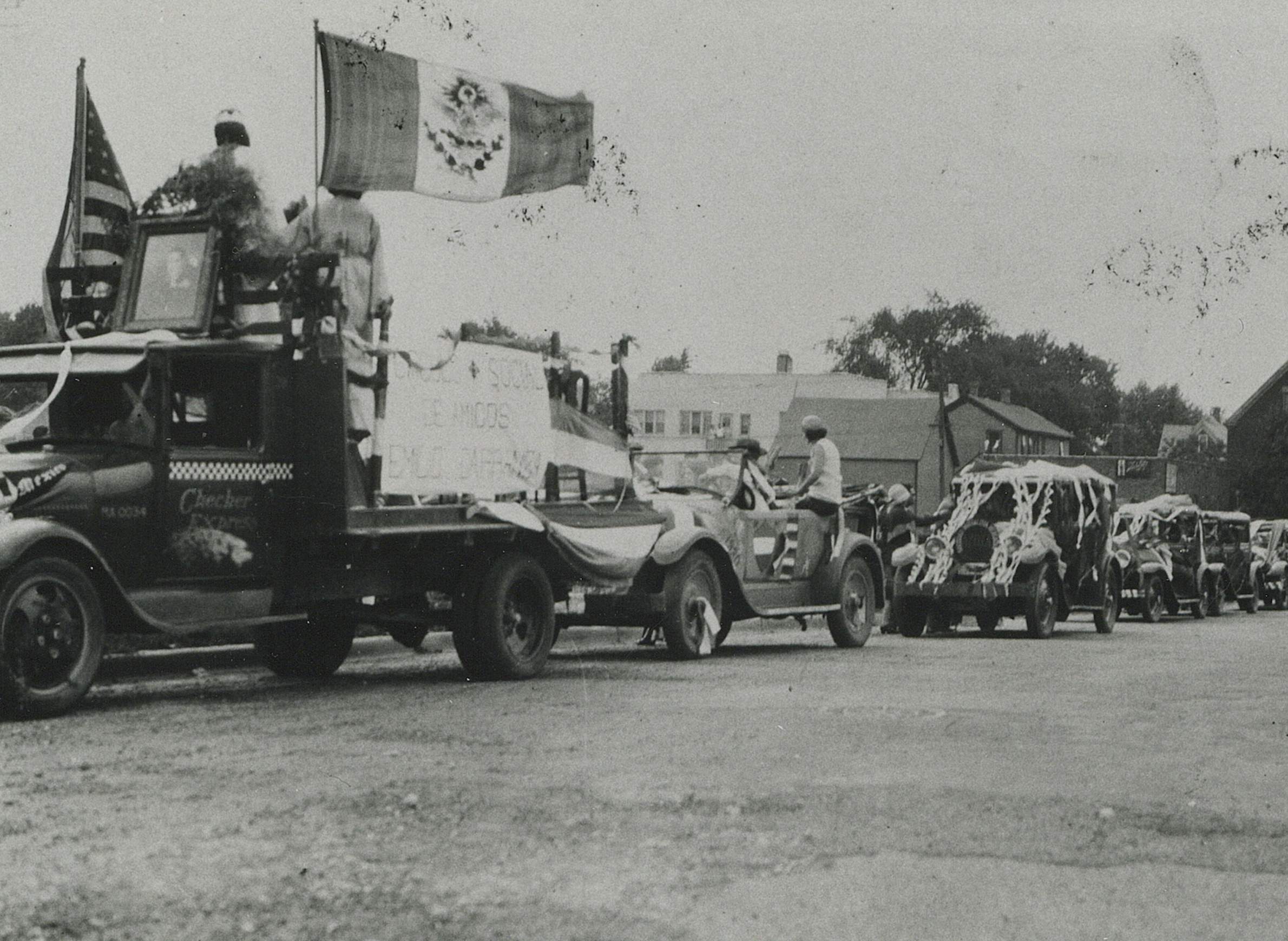
Milwaukee's Mexican community held a Mexican Independence Day parade in 1930.

Milwaukee's Mexican community held a Mexican Independence Day parade in 1930.
Latino immigrants and their descendants make up a small but rapidly growing segment of Wisconsin's population. As much as this growth may be considered a late-20th and early 21st century phenomenon, the history of Latinos in the state has much earlier origins.
Milwaukee's first community of Mexican immigrants flourished briefly but was shattered by the tragedy of the Great Depression. In the early 20th century, immigrants from Mexico came to Milwaukee seeking work, and faced great resistance in carving out a role for themselves in the city. Initially recruited as strikebreakers, they encountered hostility over access to jobs, resources, and civic participation. Their struggles were deeply intertwined with federal immigration policies, labor strife, religion, discrimination and nativism.
Historian and University of Wisconsin-Madison doctoral student Sergio González discussed their story in an Aug. 15, 2016 presentation at the Wisconsin Historical Museum in Madison. His talk was recorded for Wisconsin Public Television's University Place. González is author of the book Mexicans In Wisconsin, due out in October 2017 from the Wisconsin Historical Society Press.
González started with a look at the Día Sin Latinos (Day Without Latinos) demonstration held on Feb. 18, 2016 at the Capitol Square in Madison. About 20,000 people took part in a rally against two anti-immigrant bills making their way through Wisconsin's legislature. Some restaurants in Madison even closed their doors for the day in solidarity with their Latino employees. The protest helped to defeat one of the bills, which would have allowed local law enforcement around the state to enquire about the immigration status of people they suspected of a crime. The other, forbidding local governments from issuing identification cards to people who had trouble getting state IDs, had previously passed both houses of the legislature, and Gov. Scott Walker signed it in April of that year.
For González, these protests in early 2016 reflected a response to discriminatory policies and attitudes that immigrants have faced throughout American history. He drew links between prejudice and racism in the early 20th century and the xenophobic statements and policy proposals of Donald Trump, who at the time of the talk was running for the 2016 Republican presidential nomination.
Today, people of Mexican and other Latin American heritages live in communities throughout the Wisconsin, from bigger cities to individual dairy farms. But González said they owe a lot to people he calls "Los Primeros" (the first). This relatively small but resilient group of Mexican immigrants left an important mark on Milwaukee between 1910 and 1930.
Key facts
Key quotes